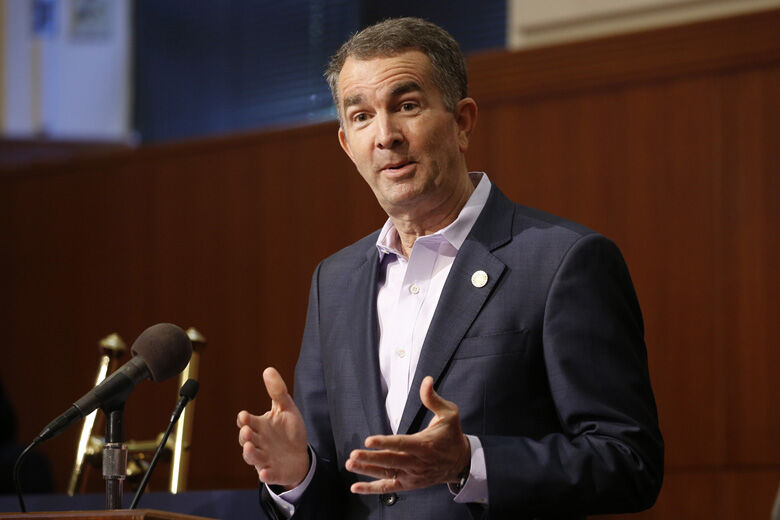Northam leads Virginia into Phase 1 of reopening plan
May 9, 2020
Virginia is set to move into its first phase of reopening on Friday, May 15 after an announcement from Gov. Ralph Northam on Monday, May 4.
“Everything you have done has truly made a difference,” Northam said in the press conference on Monday. “We flattened the curve [of COVID-19 cases] and our hospitals have not been overwhelmed. I am keenly aware that it has come with a tremendous cost. Now we can start to move into a new phase of our response.”
Phase 1 of Virginia’s plan to reopen would mean that non-essential businesses can start to reopen with restrictions. Restaurants are allowed to open dining rooms with less seating and keeping customers seated far apart to allow for social distancing. Gyms and retail stores can open but admit fewer customers and implement extensive cleaning procedures. Additionally, hair salons can open by appointment only with safety measures. Doctors, dentists, and veterinarians can resume elective medical procedures.
However, with this new easing of restrictions, some Virginians remain skeptical of how safe it is to take the steps back to normal life at this stage of the pandemic.
“Virginia hasn’t yet hit its peak, so it could be dangerous to start reopening,” Carly Radgowski (’22) said. “Many opportunities have been taken from people, for example, the summer swim team season was cancelled and that was something I’d been looking forward to all year. But these cancellations are necessary and smart to protect people, and I think that Virginia shouldn’t start reopening until it’s safer for our state.”
Besides lifting business restrictions, social gatherings under ten individuals will also be permitted. However, it is still recommended that vulnerable populations, such as immunocompromised or elderly persons, remain home.
If Phase 1 is completed after two to three weeks with a slow trend of new COVID-19 cases, the state will move into Phase 2, which would allow for social gatherings of up to 50 people and further easing on business restrictions such as capacity limits. After Phase 2, Virginia will move to its final reopening step, Phase 3, where there will be no ban on social gatherings or capacity limits for businesses.
As Virginia commences its reopening plan, Northam stresses that people should try their best to continue social distancing and washing their hands often. In the press conference on Monday when Northam announced the first phase of reopening, he emphasized that the safest place for Virginians to be is at home.
The implementation of Phase 1 comes after hospitalizations and ICU admissions begin to decrease. After the peak of 1,566 hospitalizations in Virginia on April 29, the state has seen a downward trend since with 1,496 hospitalizations on May 5.
Northam also reported that hospital staff across the state have greater access to personal protective equipment. Hospitals are also starting to have excess bed capacity as the growth of new infections slows.
As Virginia hospitals are seeing a slow in new COVID-19 cases, the state remains ranked 48th in the nation regarding testing. The state tests 1,318 people per 100,000 residents, compared to Rhode Island, which is testing 7,012 people per 100,000 residents. However, Virginia’s death rate, eight deaths per 100,000 residents, is a quarter of the death rate that Rhode Island has, which is 32 people per 100,000 residents.
The number of tests performed on a daily basis in Virginia continues to fluctuate. On May 1, a high of 6,693 tests were performed, whereas on May 5, 2,240 tests were reported. As of May 6, Virginia has 22,342 confirmed cases and 812 deaths. On Friday, May 8, Virginia saw an increase of 772 cases, with the majority of them, 293, in Fairfax County. Health officials expect both the number of new COVID-19 cases and deaths to increase in the coming months as Virginia and other states begin to lift their stay-at-home orders.
“I think in order to ensure long term health for Virginia residents, it’s best to wait until there have been significant changes in the number of [COVID-19] cases in the state,” Emily Knisley (’22) said.



